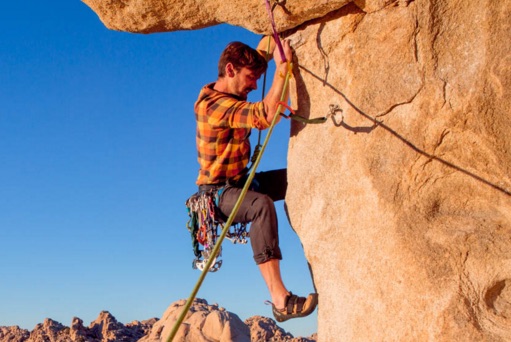TO PHOTOGRAPH CLIMBING EFFECTIVELY, you must first be a climber. Not only to be able to capture the right moment, but also what you are feeling when you are out climbing is exactly what you should be trying to capture with your camera. I have always said that a camera is your way of showing the world how you see things. Your view is unique, and if you can successfully show someone your perspective, then it will be new and interesting for them.
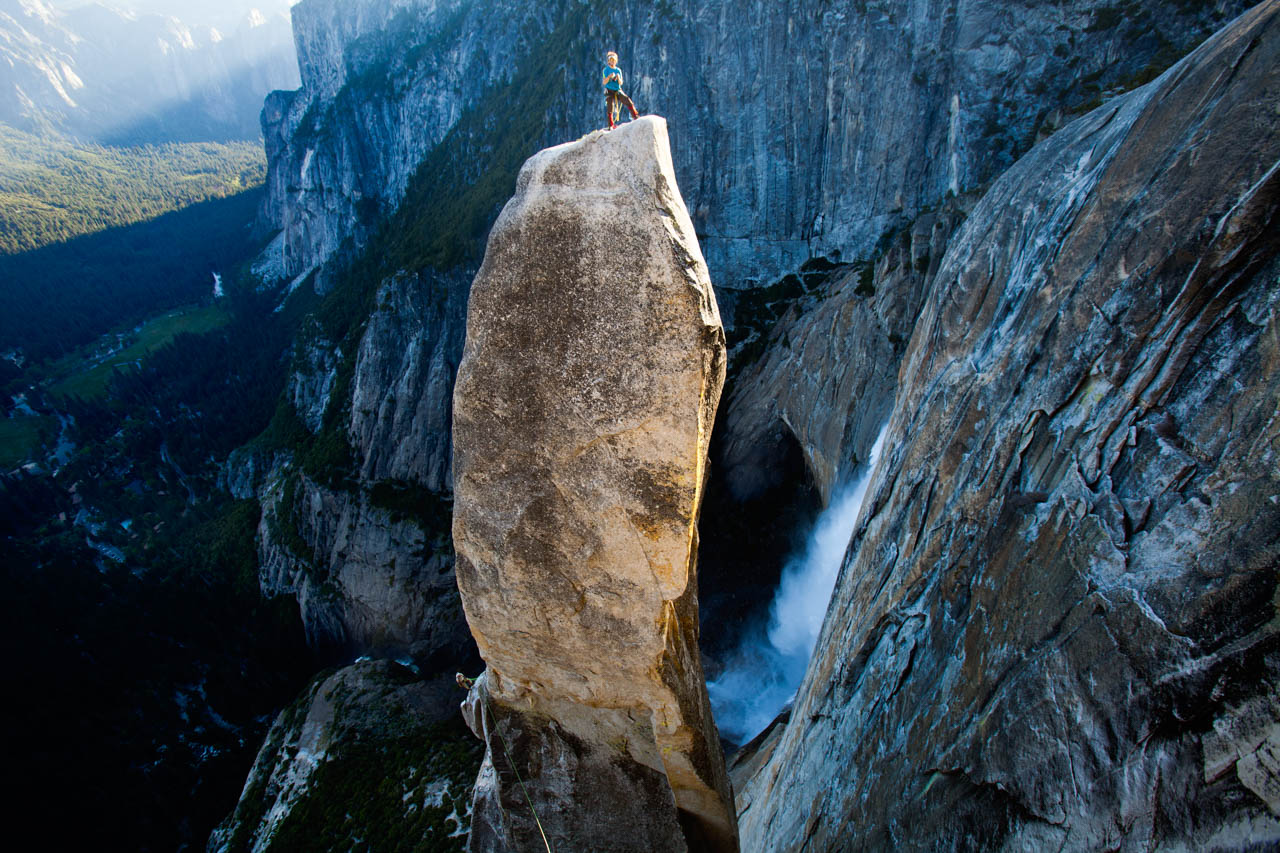
Shoot the location.
Photo: We don’t climb rocks just because it’s good exercise. We climb because it challenges us to overcome our fears and our self doubt; we climb because it puts us in amazing positions overlooking beautiful natural landscapes. Climbing is merely a reason to spend time in these places that we find so inspiring, and we aim to be better at it so that we can reach new vistas. If we were only interested in a workout, a gym would suffice. Any good climbing photograph will convey all of this. Show the place, show the struggle, and show the reward.
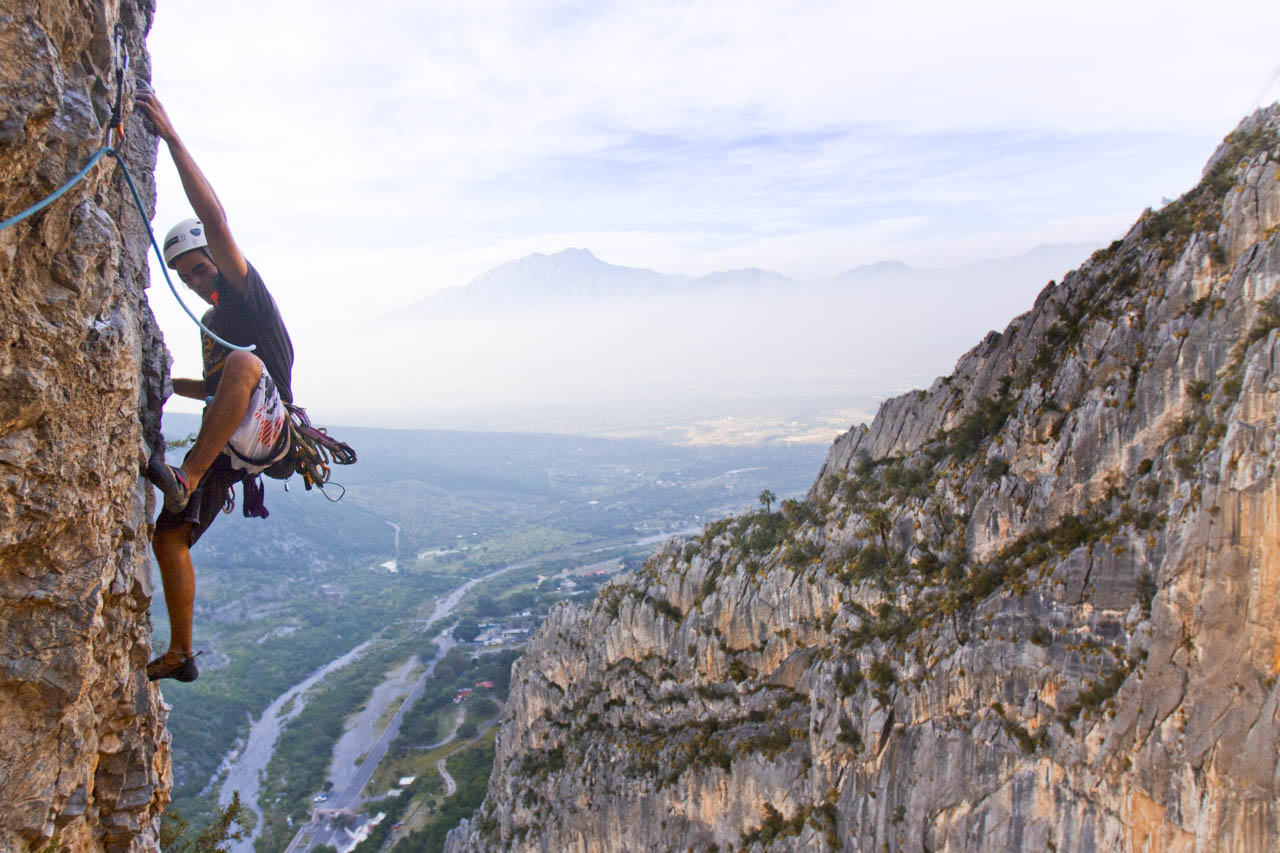
Shoot down or across.
Photo: It's tough to inspire with a photo taken from directly below a climber. Besides the fact that it’s not the most flattering view of him or her, you’ll also be dealing with something called the foreshortening effect. It happens when you take a three dimensional view and compress it down to two dimensions. The route no longer looks as steep, and the climber is too far away to convey any sort of feeling. To get a perspective that really shows what is happening, you have to be either across from, or above, the climber, showing some perspective on where they are, how they got there, and what they are going through in that moment.
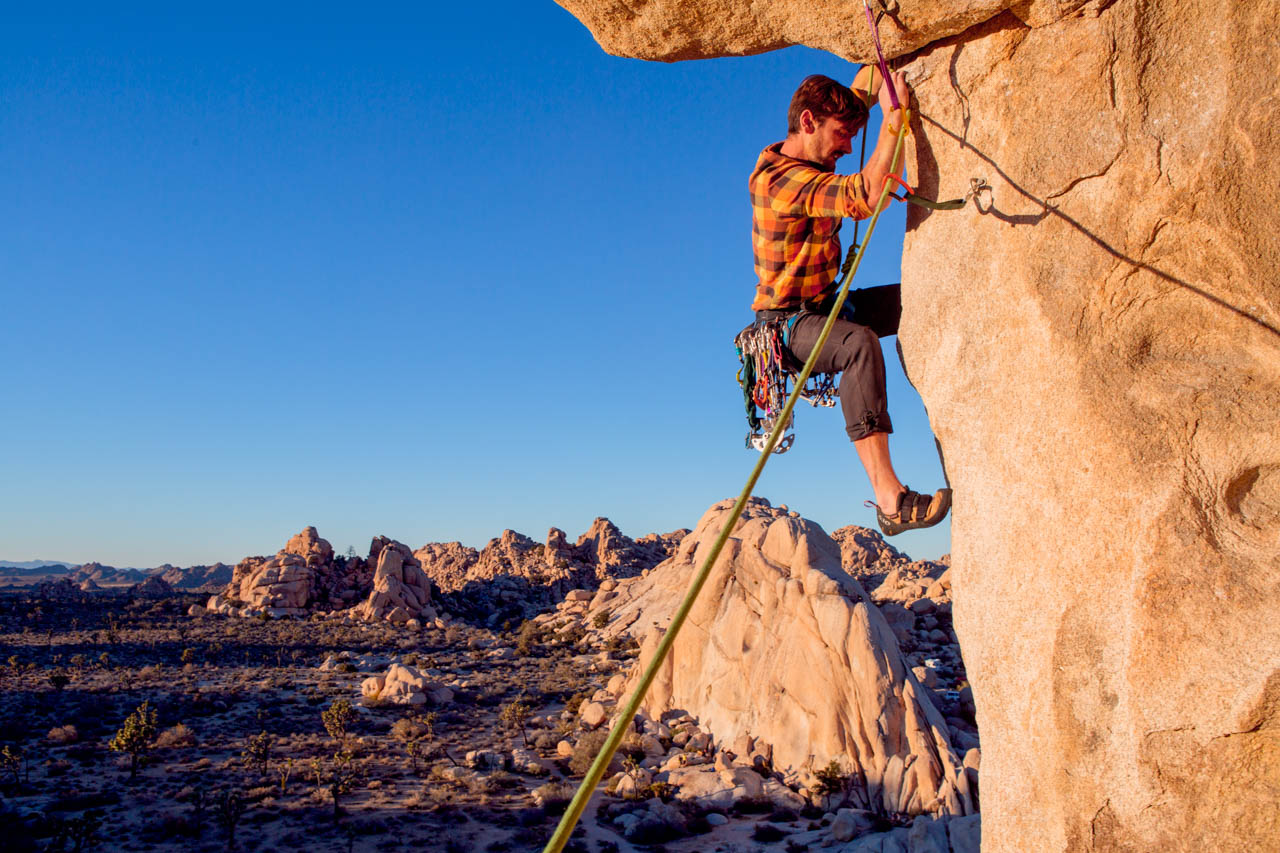
Pay attention to light.
Photo: This particular tip is relevant to all types of photography, but when shooting a sport like rock climbing, people think that the thrill of the climber's movement will make up for poor lighting. It might, but a great photo in poor light ends up being only “good” while a good photo in great light can be amazing. Shoot when the sun is lower in the sky; the light rays will be scattered by the earth's atmosphere providing a beautiful glow and soft shadows to the image.
Intermission
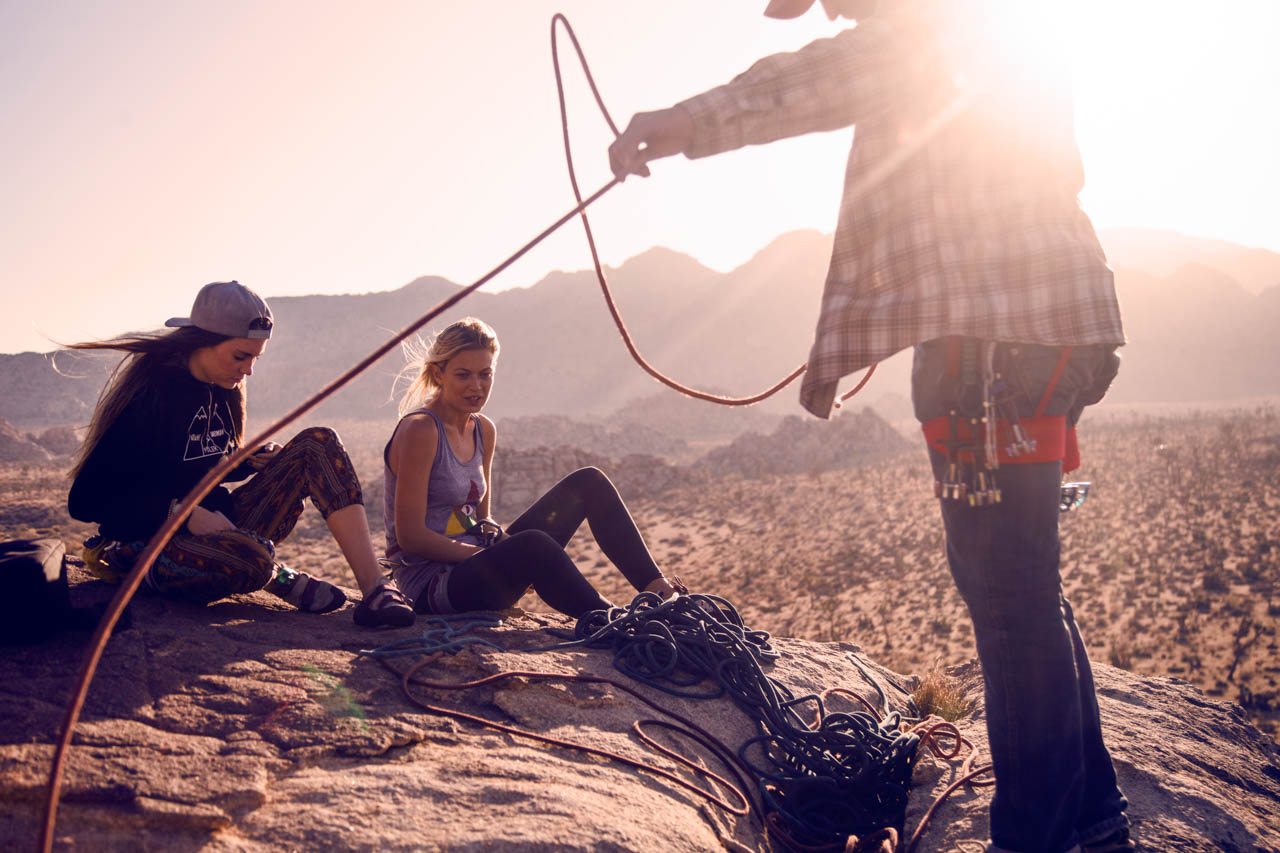
Tell the full story.
Photo: Not every image needs to be of a climber tackling an unimaginably difficult physical challenge. Sometimes to tell the story, all that you need is the right image of someone organizing their gear, or perhaps utterly exhausted lying in the dirt. These images tell the story of what climbing is all about, and often times can relay more of the story than the hero shot.

Convey risk.
Photo: Knowing the moment that best reflects the struggle that the climber is going through is key to understanding when to take the picture. When the climber has placed protection above them and the fear of taking a fall is gone, they relax, their body language no longer conveys the thrill that it did a moment before they placed their protection. A thrilling image will show that the climber is taking a risk, it will show their motivation in spite of the danger, it will give the viewer a rush by forcing them to imagine that they are the one in the precarious position.

Pick the right lens.
Photo: I was leaving for a shoot that would take me three thousand feet up the side of a cliff in Yosemite. I only had room for one lens, and wasn’t quite sure what to take. I asked my friend who is in my opinion the greatest climbing photographer of our time, Jimmy Chin, what lens he most often uses on his adventures in Yosemite. His choice is a 24-70mm lens. It’s not so wide as to distort the image, but is wide enough to get up close and personal. It’s not so long that the climber has no connection to the photographer, but it’s also long enough to make up for some of the difficulties of getting into position. That lens is all I take with me now.
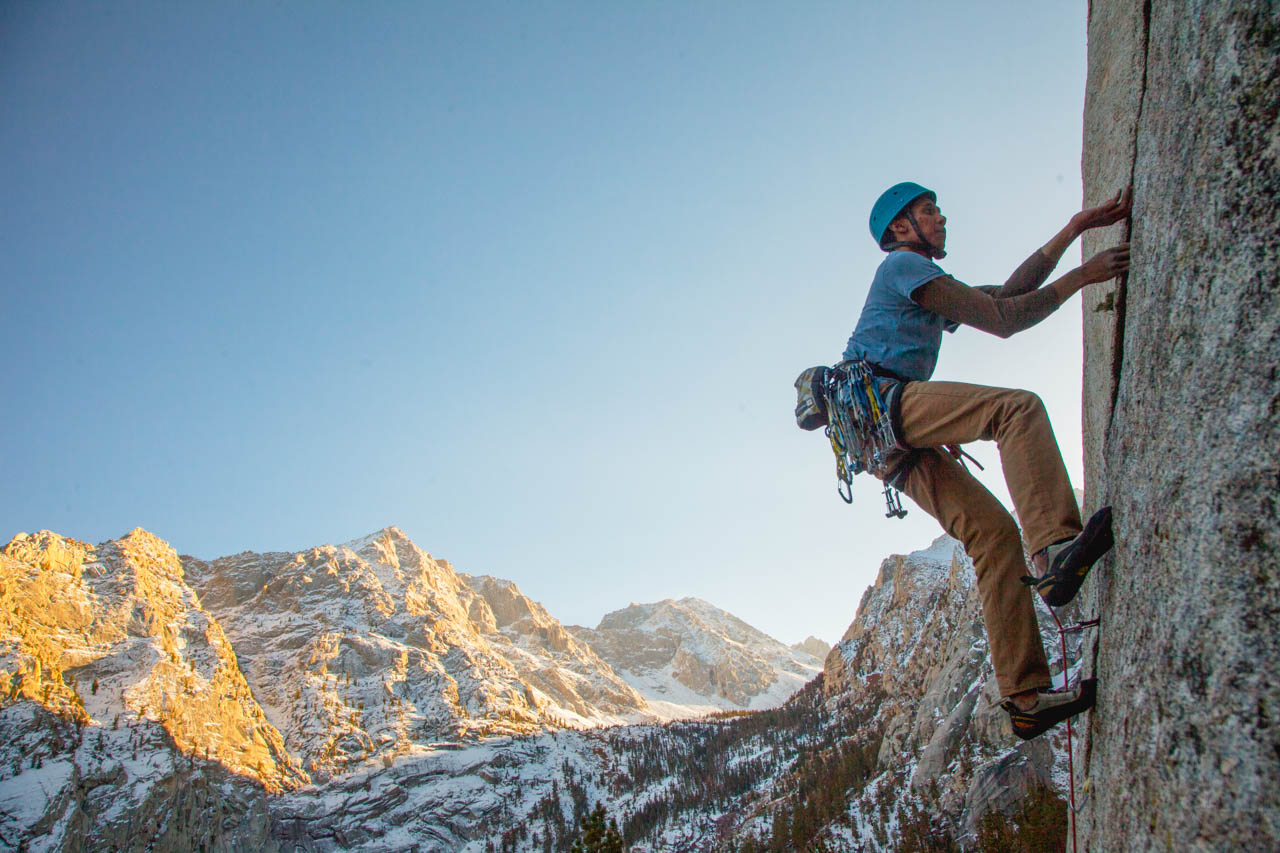
Be as prepared as possible.
Photo: Perched up on a wall, high above the ground, the photographer is undergoing his or her own struggle. Getting into position requires an intimate knowledge of rope work, safety systems, and substantial physical effort. We must align ourselves with the climber to capture the image, while staying out of the way so as not to be a danger to those around us. Now, imagine you get into position, the light is perfect, the climber is in position, and you are using the wrong lens, or your camera battery is dead. The moment is gone, and most likely the climber is going to be pretty frustrated with you. Being successful as an adventure or climbing photographer is dependent on you always being ready, and never making the climber wait for you.
Intermission
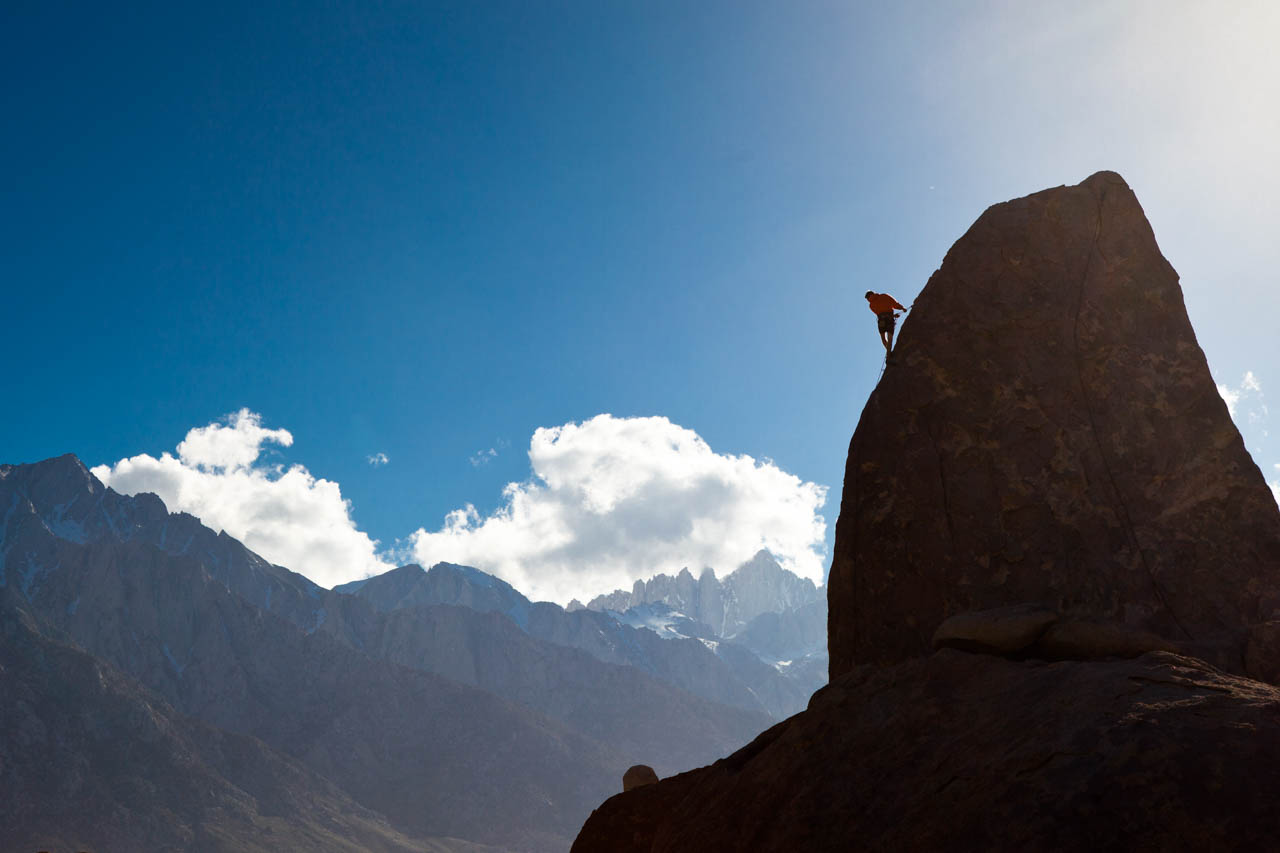
Find simple backgrounds.
Photo: It always helps to find a background that lets the climber stand out in the frame. Large blocks of color help create separation between the climber and the background. A complex background with many colors or shapes will hide the climber, making it hard to distinguish them from the surroundings. My personal favorite technique is to shoot from an angle that sets the climber against the sky, and slightly under expose the image. This creates a silhouette and simplifies the image down to its basic shapes and movement.

Have the climber wear bright colors.
Photo: One great thing about outdoorsy people is they tend to wear brightly colored jackets. For some it’s a fashion statement from the 80’s, while others do it so that if they are in trouble they are easier to find. Even though my personal choice is to wear black, I always bring a few neon jackets with me to throw on the climbers. It’s especially relevant when shooting a climber that’s far away. That one little bright spot of color can draw your eye right to the climber. Don’t assume any color will work though, a red jacket photographed against red sandstone will work more like camouflage.
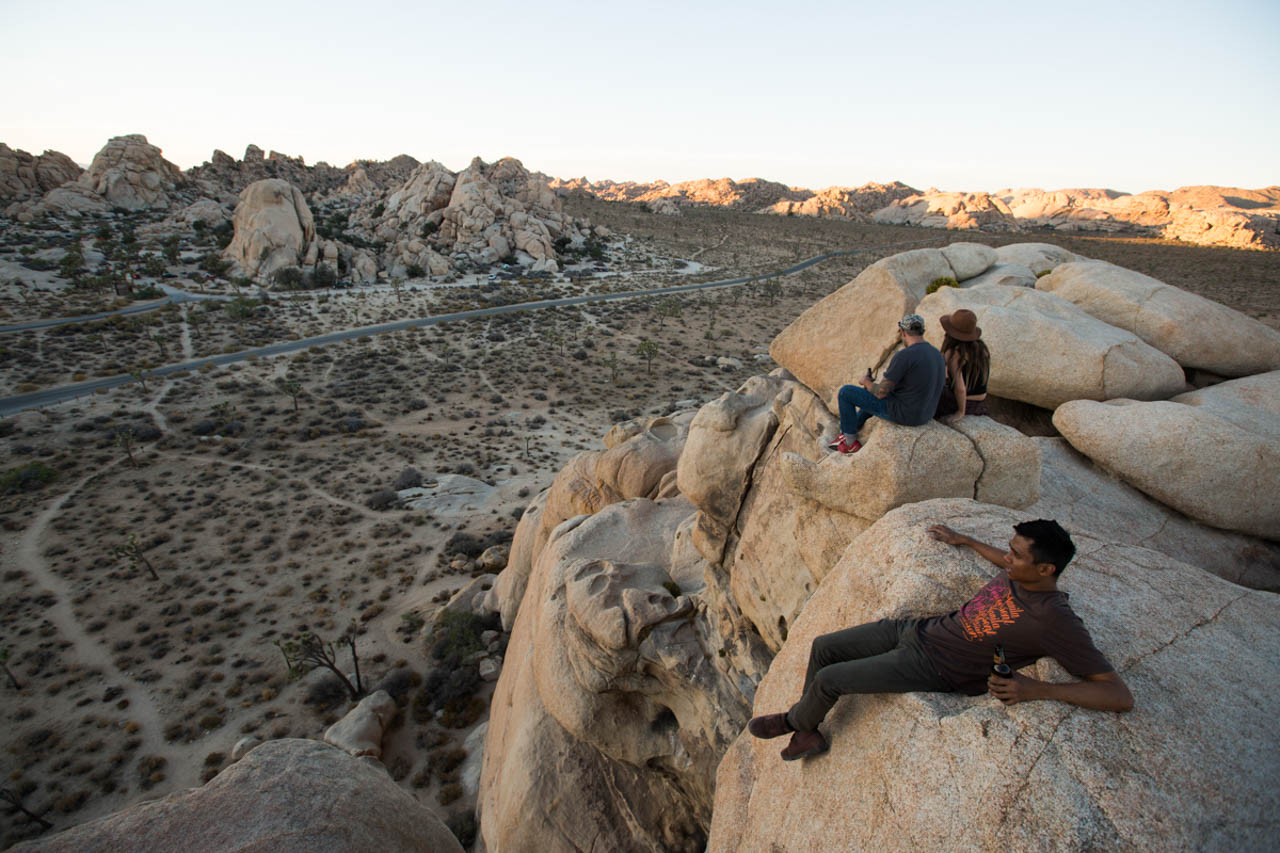
Look for memorable moments.
Photo: If all you are doing is photographing the act of climbing a rock, you’re missing a huge part of the story. The story is what makes photography interesting, look for the moments that are the ones that we will want to remember long after we’ve forgotten the climb itself.
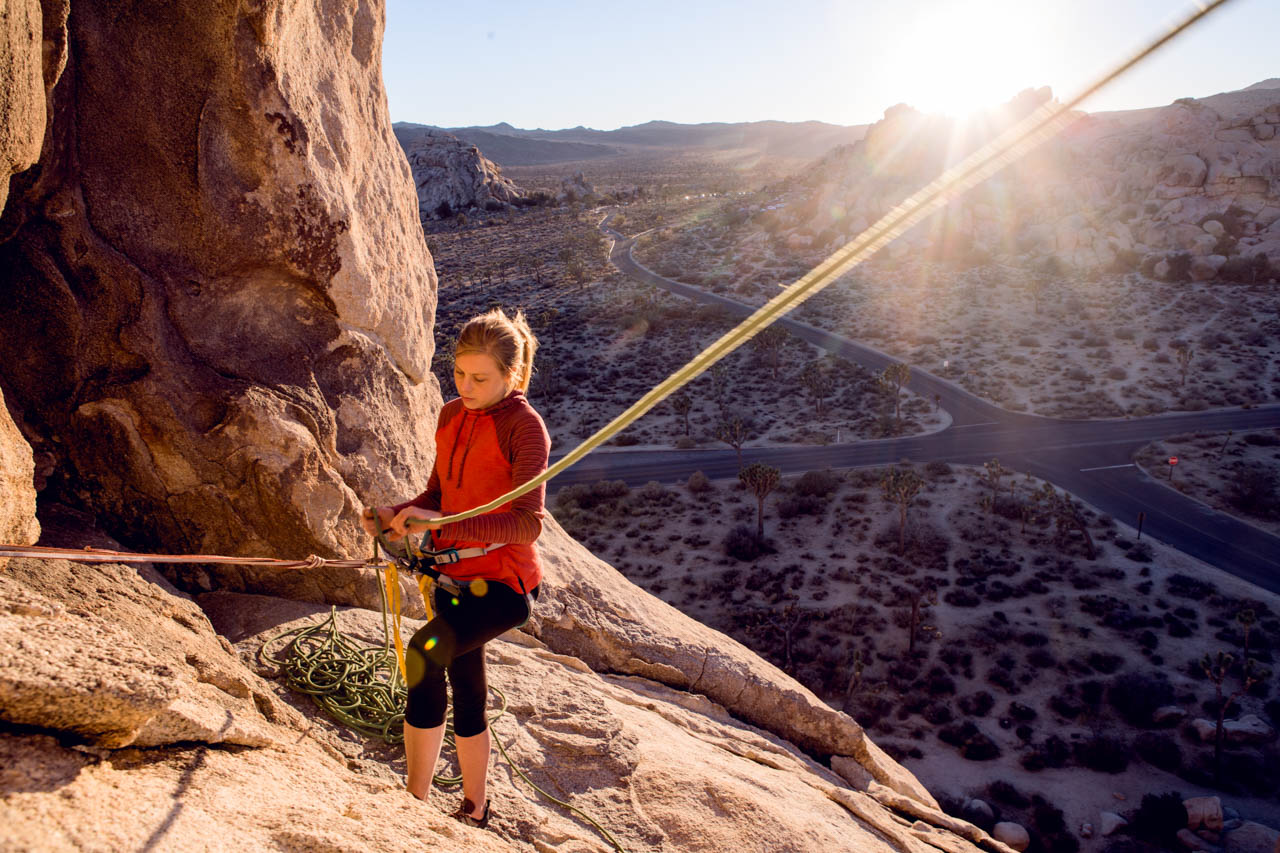
Use lines to draw the eye to the subject.
Photo: Our eyes are not as steady as we would like to think. They move around an image, following contours, colors, shapes, and brightness in a predictable pattern. A good photographer knows how to use this to create a story that unfolds over time. Our eyes will move between bright and dark spaces, and they will follow the lines in the image to do so. The lines in this image converge on the woman, standing on a ledge 100 feet up the side of a cliff. But she is also positioned between the shadows and the bright flare of the sun. You see her, but your eye is forced to constantly move around the image.

Stay out of your own way.
Photo: There’s nothing worse that putting all of your effort into getting into position ahead of the climber, and then finding that your shadow is draped across them, or your rope is dangling into the frame. A good image of a climber makes it look like they are all on their own up there, that their only path to safety is to continue moving up. Seeing the photographer's shadow or rope shatters that illusion.
